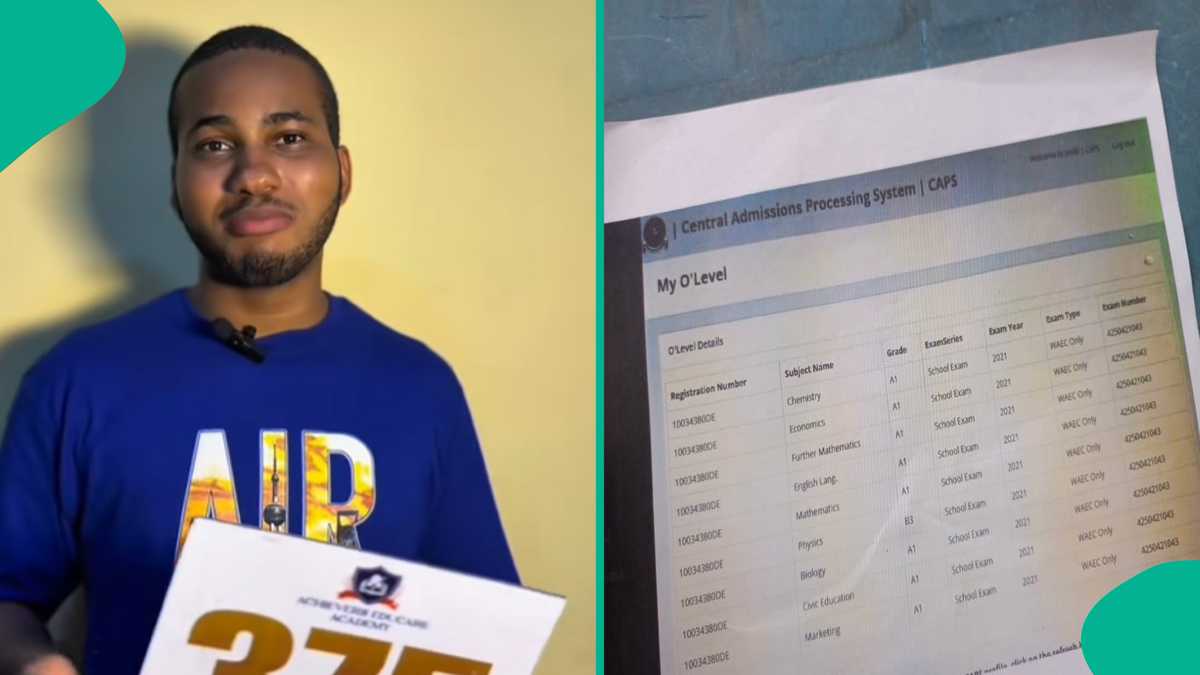Sight Words for 3 Year Olds + Free Activities PDF
Learning to read is a big step for young kids, and sight words play an important role in helping them succeed early.
Some words appear again and again in books, so children should learn to recognize them fast.
These words are called sight words, and they help kids read easily, understand sentences better, and build reading confidence over time.
Sight words are useful because they often do not follow regular phonics rules and can be hard to figure out by spelling.
By learning them early, your child can enjoy reading more and feel proud when they recognize words all by themselves.
We will help you introduce sight words to your toddler and teach them with fun examples, games, and simple daily activities.
Sight words are common words kids learn to recognize instantly.
Examples include “the, a, and, is, it, in, on, me, you, we.”
Sentence Examples:
They differ from regular words because they cannot often be sounded out.
Phonics rules do not always apply to them.
Kids memorize these words to read smoothly.
Sight words appear frequently in texts.
Recognizing them helps kids read without pausing.
Unlike other words, they are not easy to decode.
Quick recognition builds confidence in young readers.
These words form the foundation for early reading skills.
Preschoolers benefit from knowing them early.
Parents and teachers use tools to teach them.
Understanding sight words sets kids up for success.
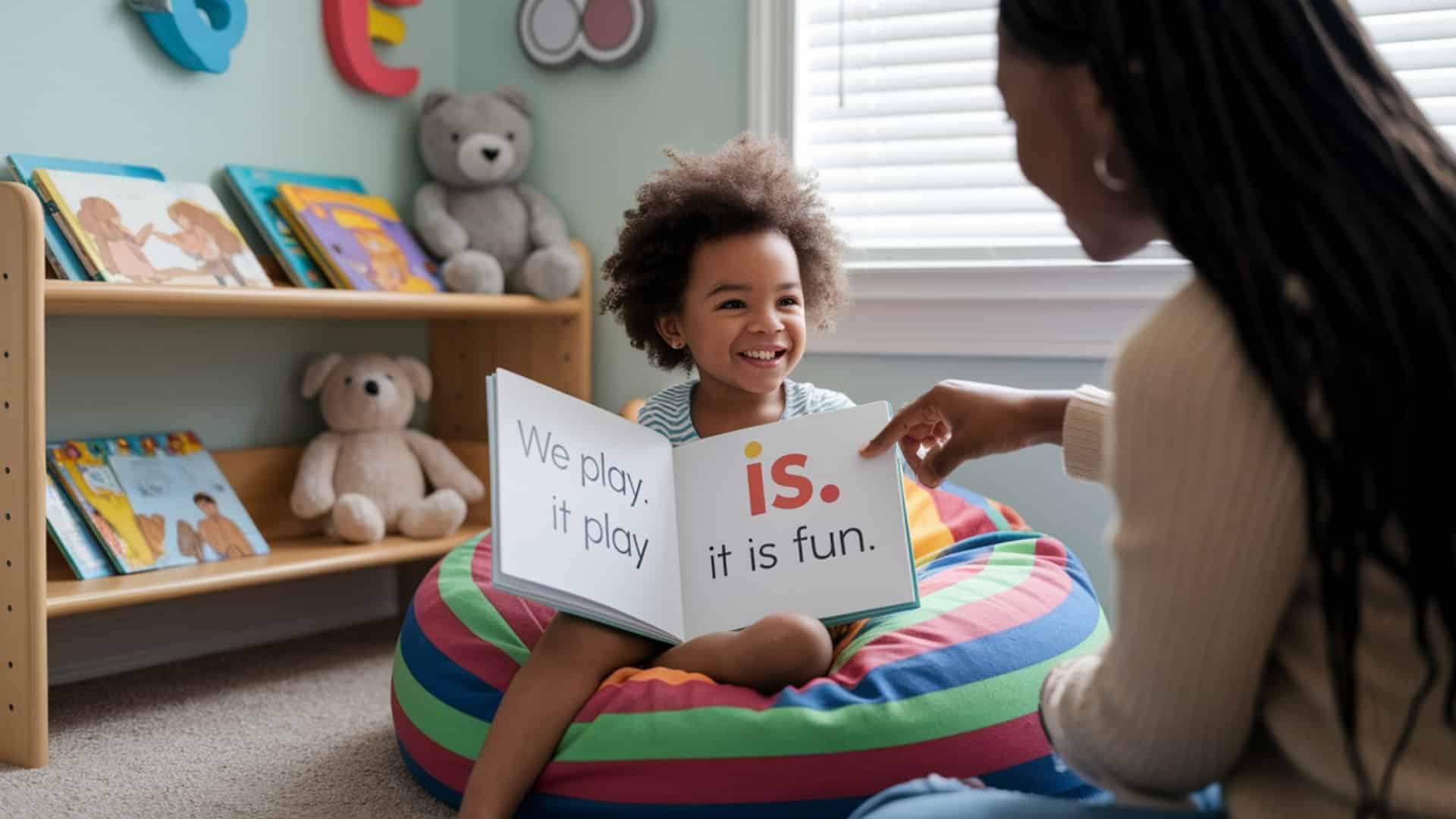
Sight words play a big role in 3-year-olds’ learning to read.
They appear in most books kids read.
Knowing them helps young readers progress more quickly through stories.
At this age, kids start connecting words to ideas.
Sight words boost confidence in early reading tasks.
They help 3-year-olds understand simple sentences better.
Recognizing these words makes reading fun and less hard.
Preschoolers feel proud when they read without help.
These words build a strong base for school success.
In short, common words are easy for young kids to learn.
Parents see progress when kids practice daily.
Teachers notice better skills in class activities.
Mastering sight words early supports future learning.
Sight words make reading exciting for 3-year-olds.
Now that we understand their role, let’s explore fun and effective ways to teach them.
There are various ways to teach sight words, not just memorizing or repeating those words or reading them again & again.
Here are some activities any parent or teacher can apply to make learning more effective:
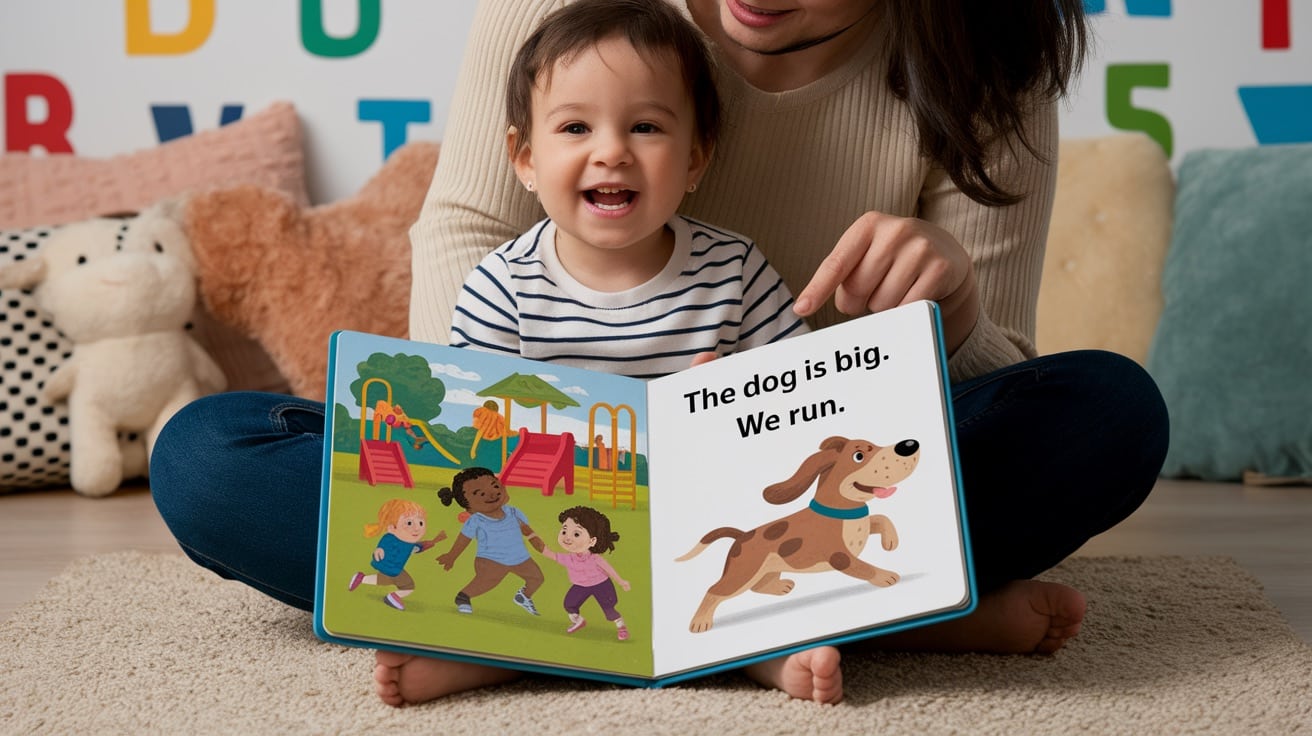
Simple storybooks with repeated sight words help kids learn fast.
Reading aloud to 3-year-olds reinforces word recognition.
Colorful pictures grab their attention and keep them interested.
Stories with short sentences are best for preschoolers.
Daily reading sessions build strong reading habits.
This method makes sight words familiar and fun.
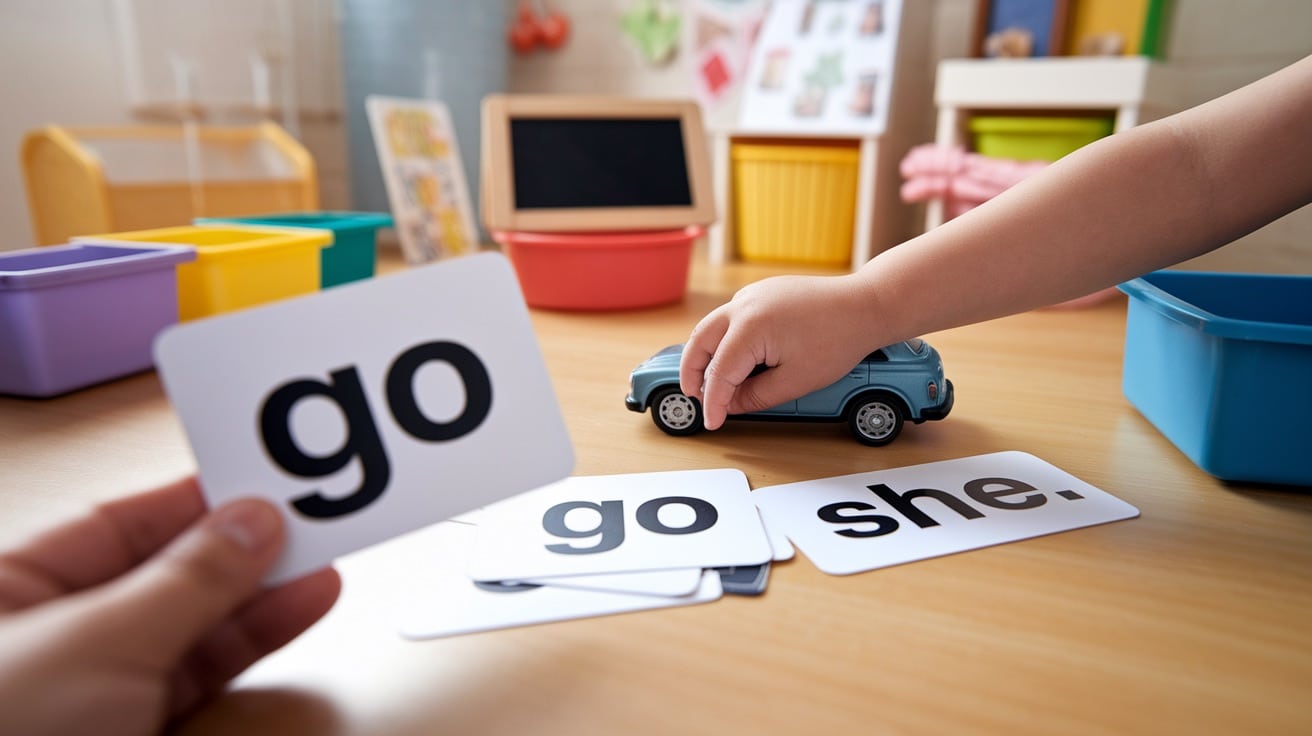
Flash cards with big, clear words aid quick learning for kids.
Young learners match or read cards aloud during games.
Short, fun sessions keep 3-year-olds focused and excited.
Colorful designs make practice enjoyable for preschoolers.
Parents can use cards anywhere for quick practice.
This tool helps kids memorize sight words easily.
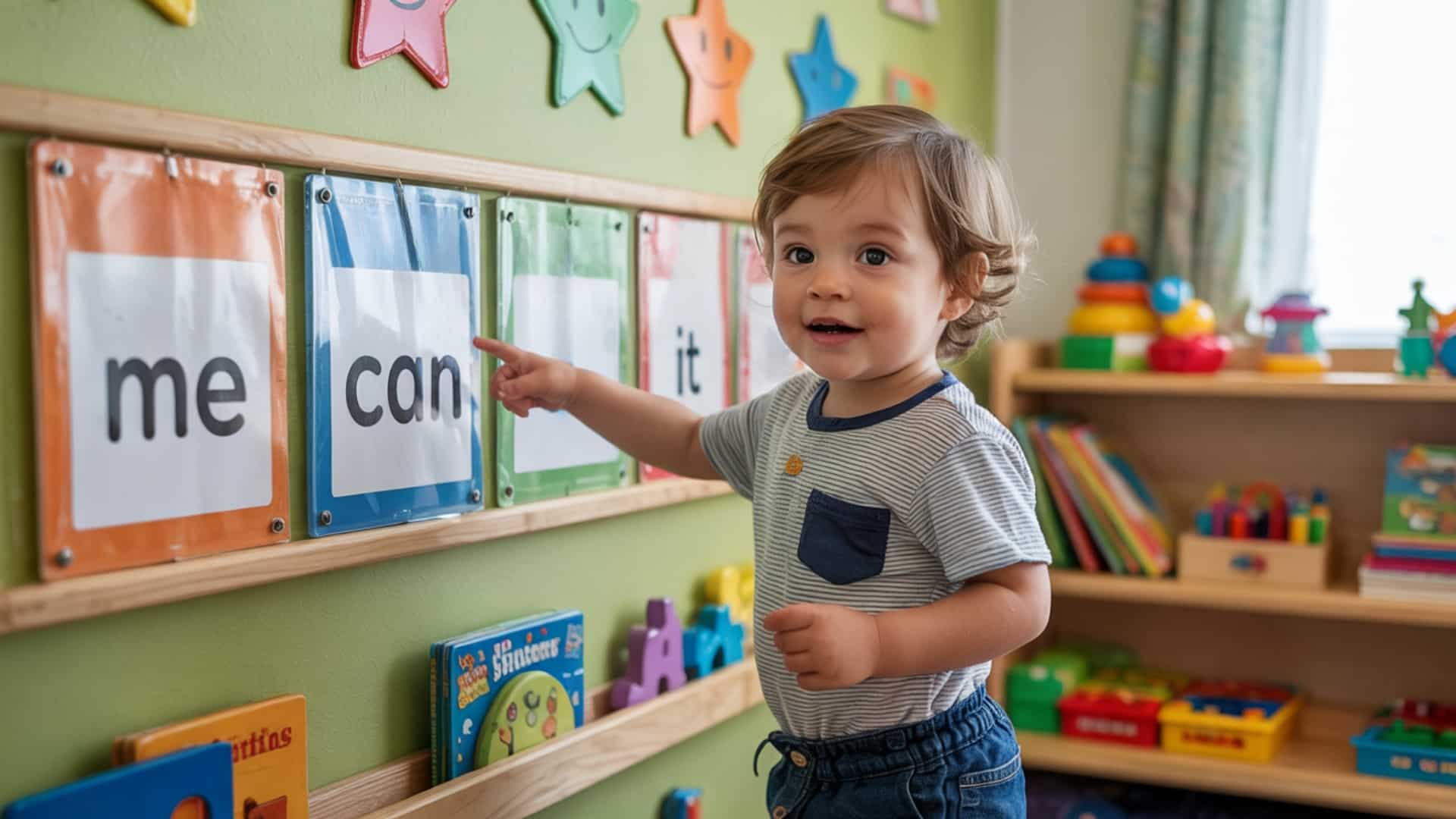
A word wall displays sight words in a child’s room.
Kids see words every day and can practice them often.
Pointing to words during play reinforces memory for 3-year-olds.
This visual tool helps young learners recognize words.
Parents can add new words weekly to keep it fresh.
Word walls create a fun learning space.
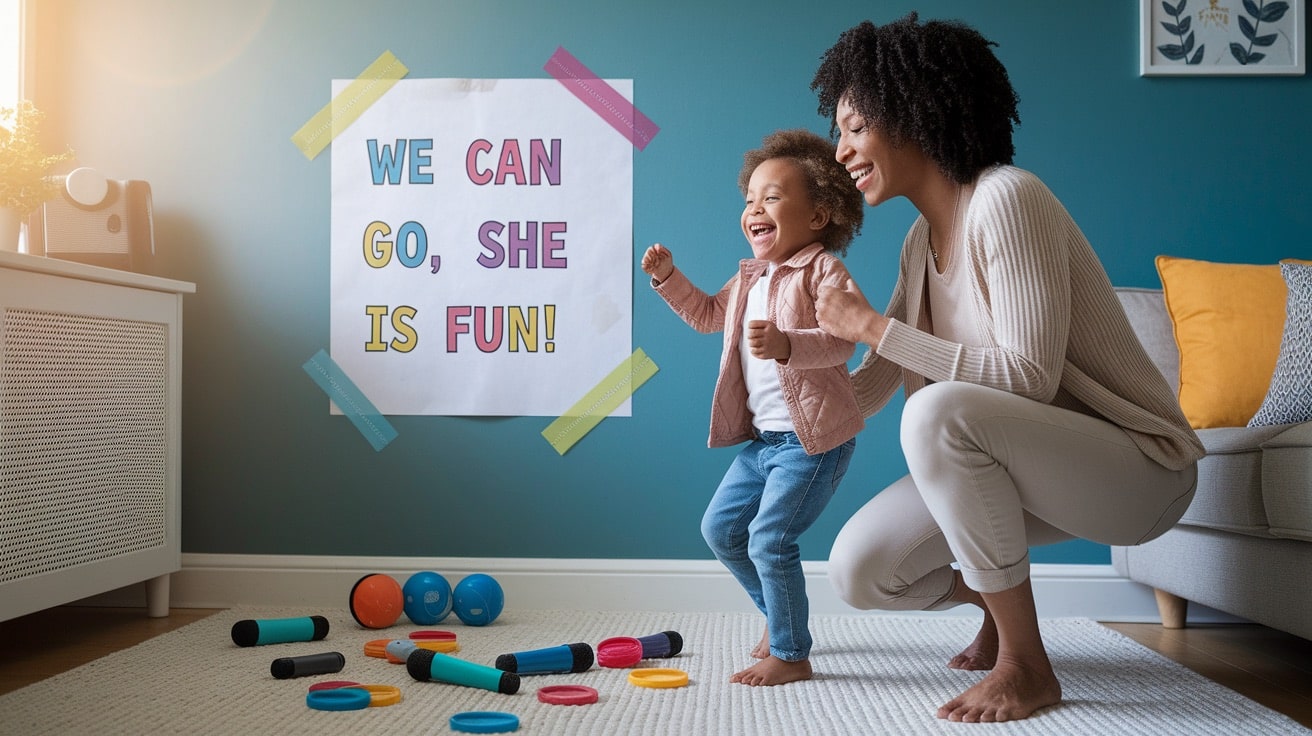
Singing simple songs with sight words makes learning fun.
Music helps 3-year-olds memorize words quickly.
Repeating lyrics during playtime reinforces sight word recognition.
Kids enjoy the rhythm and stay engaged longer.
Parents can sing along to make it interactive.
Songs turn learning into a joyful experience.
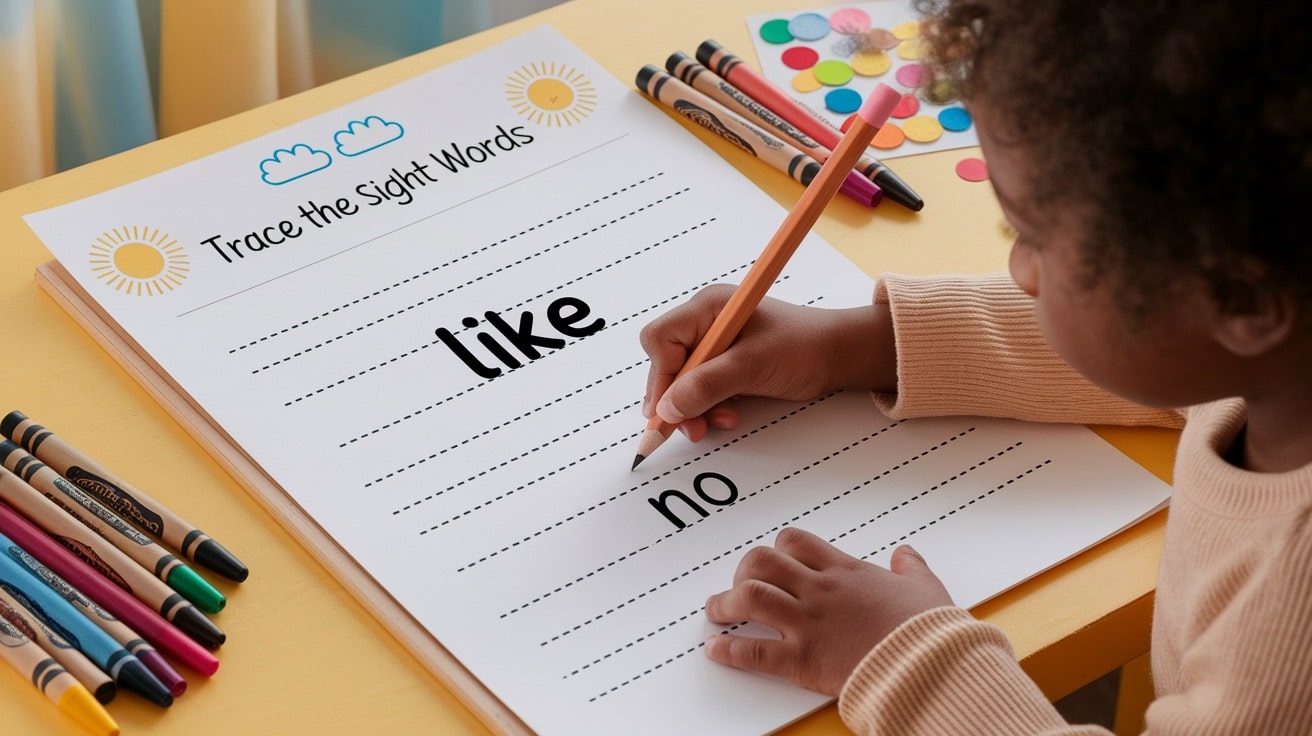
Tracing sheets let kids trace sight words to learn them.
This activity improves both reading and writing skills.
Simple designs keep 3-year-olds focused during practice.
Tracing builds confidence in recognizing words for preschoolers.
Parents can use sheets at home for short sessions.
This method supports early literacy in a fun way.
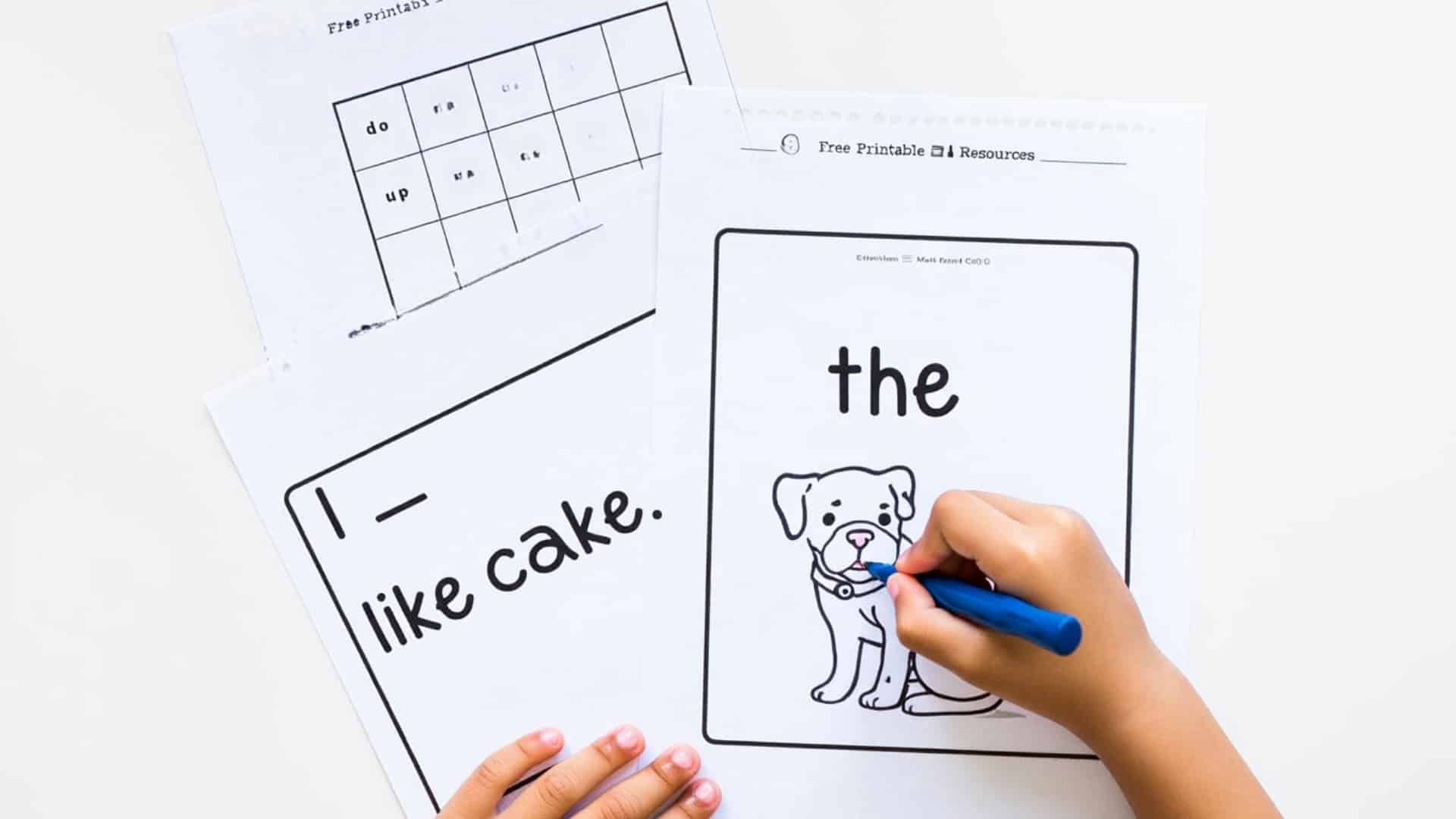
We’ve prepared a helpful set of fun sight word activities for your child, like fill-in-the-blanks, bingo, and coloring pages.
These activities are easy to use at home or in class and support how 3-year-olds learn to read common words early.
All the resources are ready to download with just one click, and you don’t need any login, sign-up, or payment.
The PDF files are fully free and designed for young learners, with large text, pictures, and simple instructions included.
Parents and teachers can print the pages or use them on a tablet or computer during short reading practice sessions.
To download, simply click on the download button and choose whether to open or save the file.
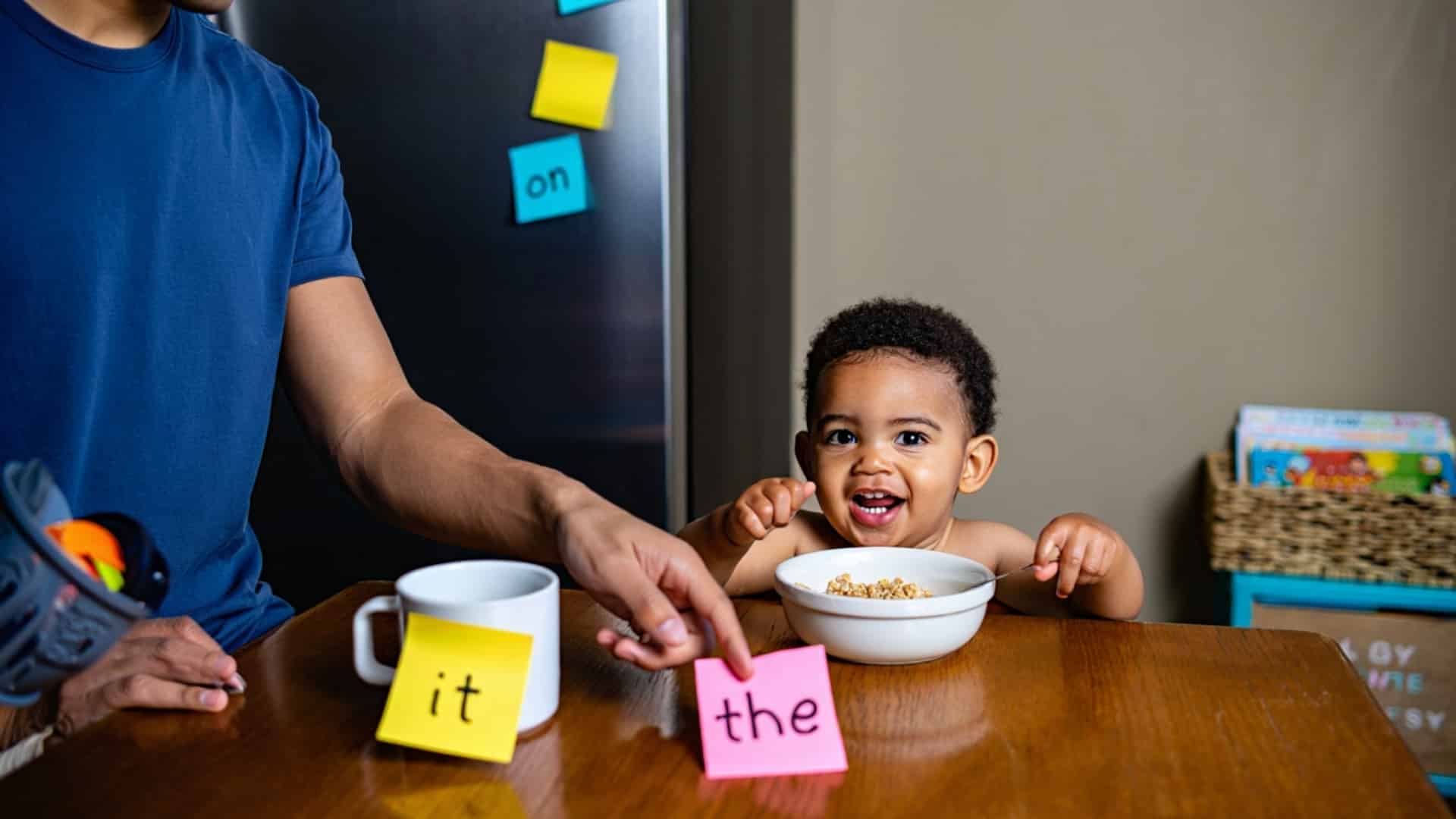
Introducing sight words to toddlers builds early reading skills.
Start at the age of 3 when kids show interest in letters or books.
Begin with simple words like “the,” “a,” or “is.”
Teach one or two words each week to avoid overwhelming them.
Use fun activities that we discussed above to keep 3-year-olds engaged.
Read stories and point to sight words during storytime.
Play matching games with words on cards or toys.
Sing songs with sight words to make learning joyful.
Keep practice sessions short, about 5 minutes daily.
Praise kids for trying to boost their confidence.
Use everyday moments, like meals, to show words.
Colorful books and games make learning exciting.
Consistent practice helps toddlers recognize words quickly.
Parents can make it a part of their daily routines.
Early exposure creates a strong reading foundation.
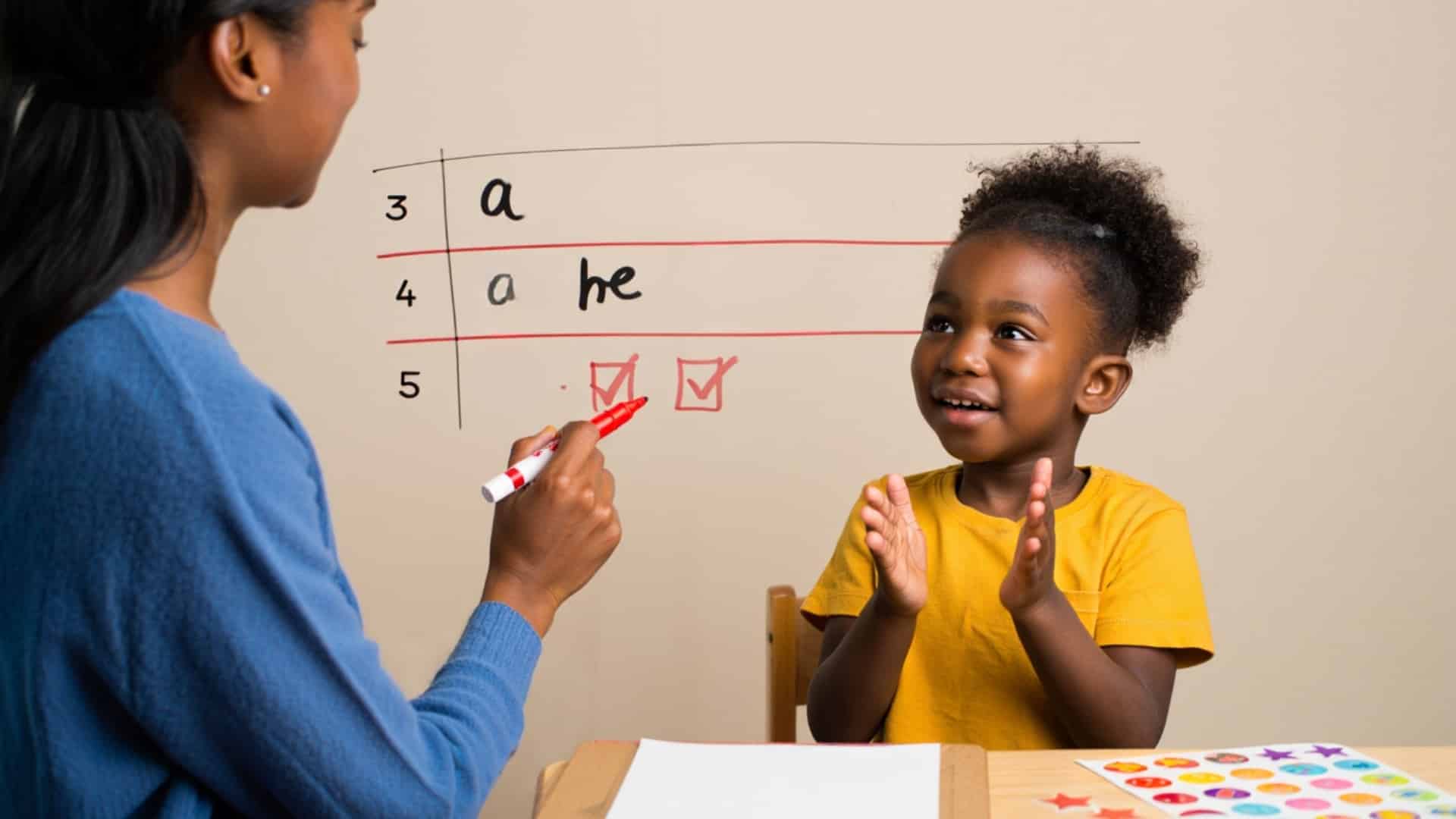
Knowing the right number of sight words helps kids read better.
The table below shows how many sight words children should know by age.
It includes a column for practice frequency to guide parents.
Each age has a realistic goal for learning. Numbers vary since kids learn at different speeds.
| 3 | 10 to 20 | Daily, 5 minutes |
| 4 | 20 to 40 | Daily, 5–10 minutes |
| 5 | 40 to 100 | Daily, 10 minutes |
These goals help parents plan sight word practice for kids.
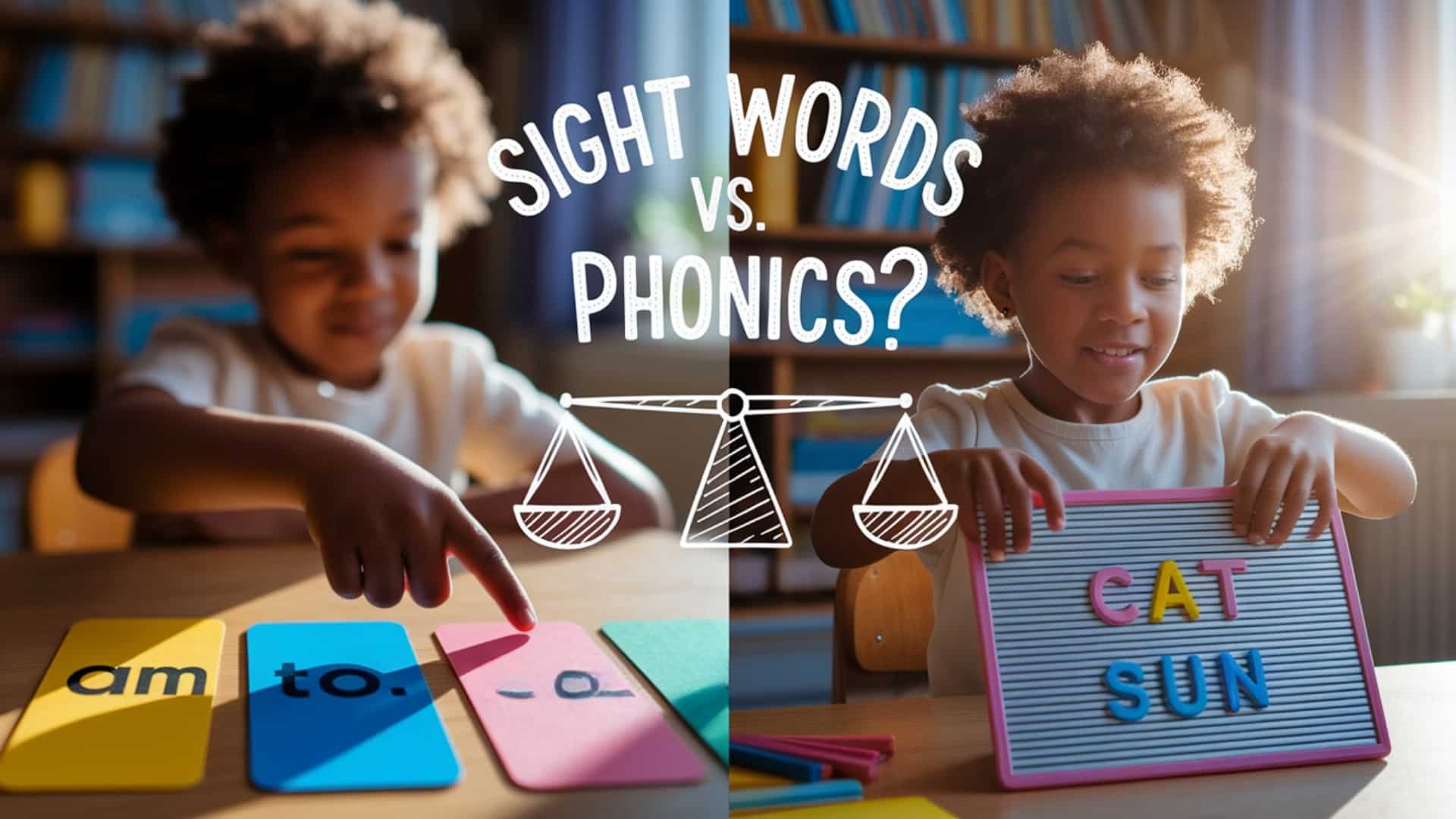
Deciding what to teach first shapes early reading success.
Both sight words and phonics are vital for young readers.
Sight words let kids recognize common words like “and” or “is” instantly.
Phonics teaches kids to sound out new or unfamiliar words.
Start with sight words for 3-year-olds to build early confidence.
Learning simple words first makes reading feel easy and fun.
This early success encourages kids to love books.
Introduce phonics after kids know 10 to 20 sight words.
Phonics helps them decode longer words in stories.
Combining both creates well-rounded readers.
Sight words offer a quick start for preschoolers.
Phonics builds skills for future reading challenges.
Teaching sight words first sparks excitement.
This approach ensures kids enjoy reading early on.
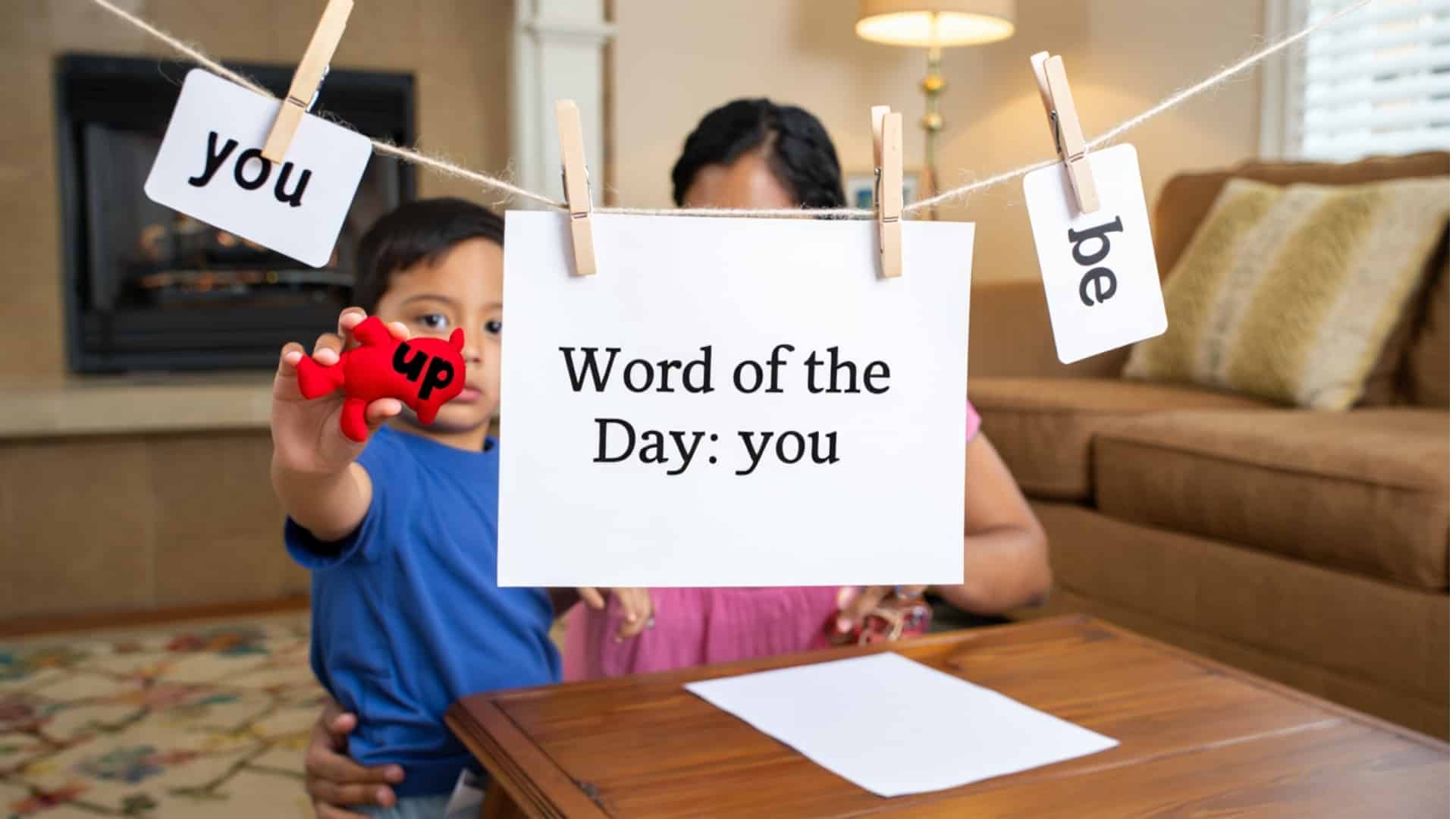
Teaching sight words to a 3-year-old can be fun, simple, and rewarding with the right strategies.
Here are some helpful tips to guide them:
With these tips, parents can turn sight word practice into a joyful and confidence-boosting part of everyday life.
Sight words help young kids read better by making common words easy to recognize.
We learned what sight words are, why they matter, and how to teach them in fun ways at home or school.
Using books, flashcards, songs, and games makes learning exciting and helps 3-year-olds enjoy reading without stress or pressure.
Daily practice builds strong reading habits and gives preschoolers confidence when they read simple words on their own.
Parents and teachers play a big part in helping kids succeed by using fun tools and keeping practice short and consistent.
Ready to try these ideas with your child or class?
Which activity will you try first?
Tell us in the comments and share your favorite one below.
If you found this helpful, check out more blogs in our Education & Learning category!
You may also like...
Diddy's Legal Troubles & Racketeering Trial

Music mogul Sean 'Diddy' Combs was acquitted of sex trafficking and racketeering charges but convicted on transportation...
Thomas Partey Faces Rape & Sexual Assault Charges

Former Arsenal midfielder Thomas Partey has been formally charged with multiple counts of rape and sexual assault by UK ...
Nigeria Universities Changes Admission Policies

JAMB has clarified its admission policies, rectifying a student's status, reiterating the necessity of its Central Admis...
Ghana's Economic Reforms & Gold Sector Initiatives

Ghana is undertaking a comprehensive economic overhaul with President John Dramani Mahama's 24-Hour Economy and Accelera...
WAFCON 2024 African Women's Football Tournament

The 2024 Women's Africa Cup of Nations opened with thrilling matches, seeing Nigeria's Super Falcons secure a dominant 3...
Emergence & Dynamics of Nigeria's ADC Coalition

A new opposition coalition, led by the African Democratic Congress (ADC), is emerging to challenge President Bola Ahmed ...
Demise of Olubadan of Ibadanland
Oba Owolabi Olakulehin, the 43rd Olubadan of Ibadanland, has died at 90, concluding a life of distinguished service in t...
Death of Nigerian Goalkeeping Legend Peter Rufai

Nigerian football mourns the death of legendary Super Eagles goalkeeper Peter Rufai, who passed away at 61. Known as 'Do...




